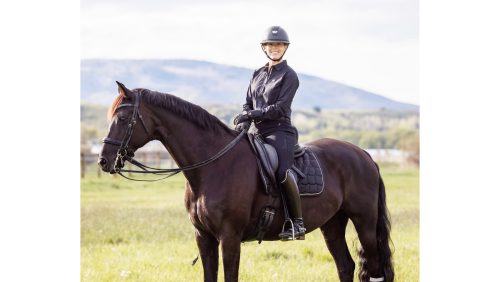The American Horse Council\’s new study, “The Economic Impact of the Horse Industry In The United States,” released yesterday (June 28), contains numbers that show the importance of the equine-breeding industry to all forms of competition.
According to the study, conducted by Deloitte Consulting LLP last year, approximately 703,577 U.S. horses are involved in breeding horses for “showing,” the report\’s denomination for almost all kinds of competition that aren\’t racing. Another 427,823 horses are used for breeding race horses, a designation that includes Thoroughbreds and Quarter Horses. The term “breeding horses” also includes horses too young to compete yet.
That means that approximately 1,131,400 horses are being used to produce competition horses, compared to 2,432,085 horses actually competing. The two groups—breeding and competing horses—comprise almost 39 percent of the total U.S. horse population. The AHC study also thoroughly analyzed 15 “break-out states,” chosen because their governments helped subsidize the study, probably because their leaders could see an economic benefit from doing it.
Clearly they\’re the “horsiest” states because these 15 states contain about 51 percent of the total U.S. equine population. (The only two “top-10” states, in equine population, that didn\’t participate were eighth-ranked North Carolina and ninth-ranked Pennsylvania.)
ADVERTISEMENT
Texas has the most horses (978,822) and the most human participants in the horse industry (455,649), but it ranks second in total effect on the U.S. gross domestic product ($5.2 billion per year) and third in total effect on full-time equivalent jobs (97,041).
With about 280,000 fewer horses, California ranks No. 2 in horse population (698,345) and third in number of participants involved in the horse industry (311,119), but it\’s No. 1 in total effect on the GDP ($6.9 billion annually). The reason, says the report, is racetracks, where attendance and betting really boost the GDP effect.
Racetracks help Florida and Kentucky stand No. 3 and No. 4 in GDP effect, although they\’re in the top 5 in the other categories too. But they really boost Louisiana (11th in population but fifth in GDP effect), New York (10th in population but sixth in GDP), and Maryland (12th in population but eighth in GDP).
Of these 15 states, horses create at least 20,000 jobs in 14, with Florida and California each reporting more than 100,000 directly related jobs. Wyoming, with 4,900 directly related jobs is the only exception, but the windy, wide-open state has a population of only 454,000 people.














